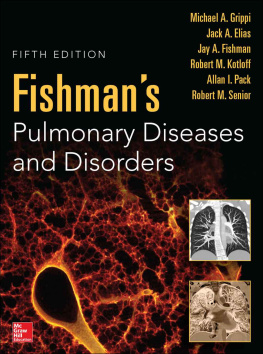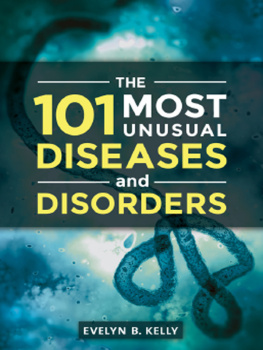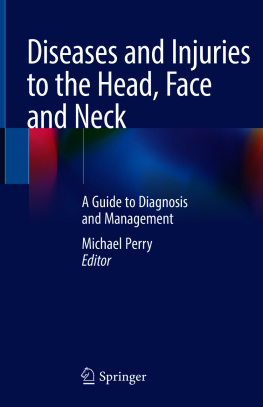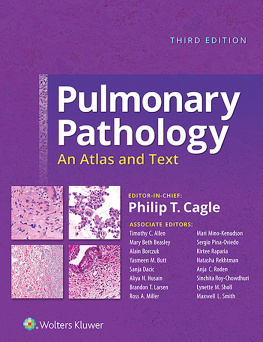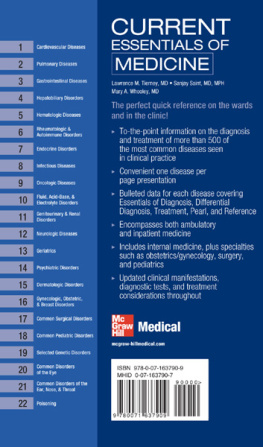Grippi Michael - Fishman’s Pulmonary Diseases and Disorders, Fifth Edition
Here you can read online Grippi Michael - Fishman’s Pulmonary Diseases and Disorders, Fifth Edition full text of the book (entire story) in english for free. Download pdf and epub, get meaning, cover and reviews about this ebook. year: 2015, publisher: McGraw-Hill Education, genre: Science. Description of the work, (preface) as well as reviews are available. Best literature library LitArk.com created for fans of good reading and offers a wide selection of genres:
Romance novel
Science fiction
Adventure
Detective
Science
History
Home and family
Prose
Art
Politics
Computer
Non-fiction
Religion
Business
Children
Humor
Choose a favorite category and find really read worthwhile books. Enjoy immersion in the world of imagination, feel the emotions of the characters or learn something new for yourself, make an fascinating discovery.
- Book:Fishman’s Pulmonary Diseases and Disorders, Fifth Edition
- Author:
- Publisher:McGraw-Hill Education
- Genre:
- Year:2015
- Rating:4 / 5
- Favourites:Add to favourites
- Your mark:
- 80
- 1
- 2
- 3
- 4
- 5
Fishman’s Pulmonary Diseases and Disorders, Fifth Edition: summary, description and annotation
We offer to read an annotation, description, summary or preface (depends on what the author of the book "Fishman’s Pulmonary Diseases and Disorders, Fifth Edition" wrote himself). If you haven't found the necessary information about the book — write in the comments, we will try to find it.
Fishman’s Pulmonary Diseases and Disorders, Fifth Edition — read online for free the complete book (whole text) full work
Below is the text of the book, divided by pages. System saving the place of the last page read, allows you to conveniently read the book "Fishman’s Pulmonary Diseases and Disorders, Fifth Edition" online for free, without having to search again every time where you left off. Put a bookmark, and you can go to the page where you finished reading at any time.
Font size:
Interval:
Bookmark:
ON THE COVER

The background image was obtained using three-dimensional, micro-computed tomography (micro-CT) on a lung specimen from a normal donor. Airways and blood vessels are shown penetrating alveolar ducts and alveoli. Imaging was performed at 8-m isotropic resolution (McDonough JE, Yuan R, Suzuki M, et al. Small-airway obstruction and emphysema in chronic obstructive pulmonary disease. N Engl J Med. 2011;365(17):15671575. PMCID: PMC3238466). The clinical CT images in the insets are still frames captured from the corresponding online video, which can be accessed by scanning the adjacent QR code. The top image, a maximum-intensity projection of a reformatted coronal section, shows contrast-enhanced pulmonary vasculature. The bottom image, a volume rendering of a similar reformatted coronal section using inverted gray scale, reveals the airways.
The initial portion of the video, comprised of a coronal view from a contrast-enhanced chest CT scan obtained from a normal, 25-year-old woman, shows volume rendering of the bony thorax and pulmonary vasculature. The video transitions to volume rendering of the lungs, trachea, and bronchi. Shown subsequently is a rotating tomographic section of the distal airways. A red box in the section indicates the general location from which a lung specimen was obtained from a separate, normal donor for micro-CT imaging. The last segment of this portion of the video shows rectangular volume rendering of the specimen, which then transitions to a rotating tomographic depiction. Blood vessels (solid arrow), alveolar ducts (dashed arrow), and alveoli (dotted arrow) are identified. The second portion of the video demonstrates an unenhanced CT scan from a 63-year-old female lung transplant recipient who had severe COPD. The patients chest x-ray is shown on the left and axial CT images on the right. The red box indicates the location from which a specimen was obtained from the explanted emphysematous lung for micro-CT imaging. The micro-CT segment in the video includes rectangular volume rendering of the emphysematous lung specimen and, subsequently, a rotating tomographic section of the tissue sample. Loss of alveolar structure is evident. Blood vessels (solid arrow), alveolar ducts (dashed arrow), and alveoli (dotted arrow) are noted. In this specimen, blood vessels are filled with residual blood.
Images courtesy of James C. Hogg, MD, PhD, John E. McDonough, PhD (both from the University of British Columbia), Joel D. Cooper, MD, Warren B. Gefter, MD, Michael A. Grippi, MD, Pablo G. Sanchez, MD, Drew A. Torigian, MD, and Alexander C. Wright, PhD (all from the University of Pennsylvania).
NOTICE
Medicine is an ever-changing science. As new research and clinical experience broaden our knowledge, changes in treatment and drug therapy are required. The authors and the publisher of this work have checked with sources believed to be reliable in their efforts to provide information that is complete and generally in accord with the standards accepted at the time of publication. However, in view of the possibility of human error or changes in medical sciences, neither the authors nor the publisher nor any other party who has been involved in the preparation or publication of this work warrants that the information contained herein is in every respect accurate or complete, and they disclaim all responsibility for any errors or omissions or for the results obtained from use of the information contained in this work. Readers are encouraged to confirm the information contained herein with other sources. For example and in particular, readers are advised to check the product information sheet included in the package of each drug they plan to administer to be certain that the information contained in this work is accurate and that changes have not been made in the recommended dose or in the contraindications for administration. This recommendation is of particular importance in connection with new or infrequently used drugs.
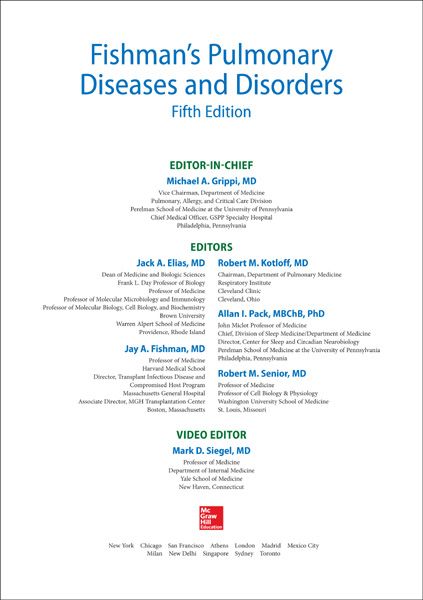
Copyright 2015 by McGraw-Hill Education. All rights reserved. Except as permitted under the United States Copyright Act of 1976, no part of this publication may be reproduced or distributed in any form or by any means, or stored in a database or retrieval system, without the prior written permission of the publisher.
ISBN: 978-1-25-958912-6
MHID: 1-25-958912-9
The material in this eBook also appears in the print version of this title: ISBN: 978-0-07-179672-9, MHID: 0-07-179672-X.
eBook conversion by codeMantra
Version 1.0
All trademarks are trademarks of their respective owners. Rather than put a trademark symbol after every occurrence of a trademarked name, we use names in an editorial fashion only, and to the benefit of the trademark owner, with no intention of infringement of the trademark. Where such designations appear in this book, they have been printed with initial caps.
McGraw-Hill Education eBooks are available at special quantity discounts to use as premiums and sales promotions or for use in corporate training programs. To contact a representative, please visit the Contact Us page at www.mhprofessional.com.
TERMS OF USE
This is a copyrighted work and McGraw-Hill Education and its licensors reserve all rights in and to the work. Use of this work is subject to these terms. Except as permitted under the Copyright Act of 1976 and the right to store and retrieve one copy of the work, you may not decompile, disassemble, reverse engineer, reproduce, modify, create derivative works based upon, transmit, distribute, disseminate, sell, publish or sublicense the work or any part of it without McGraw-Hill Educations prior consent. You may use the work for your own noncommercial and personal use; any other use of the work is strictly prohibited. Your right to use the work may be terminated if you fail to comply with these terms.
THE WORK IS PROVIDED AS IS. McGRAW-HILL EDUCATION AND ITS LICENSORS MAKE NO GUARANTEES OR WARRANTIES AS TO THE ACCURACY, ADEQUACY OR COMPLETENESS OF OR RESULTS TO BE OBTAINED FROM USING THE WORK, INCLUDING ANY INFORMATION THAT CAN BE ACCESSED THROUGH THE WORK VIA HYPERLINK OR OTHERWISE, AND EXPRESSLY DISCLAIM ANY WARRANTY, EXPRESS OR IMPLIED, INCLUDING BUT NOT LIMITED TO IMPLIED WARRANTIES OF MERCHANTABILITY OR FITNESS FOR A PARTICULAR PURPOSE. McGraw-Hill Education and its licensors do not warrant or guarantee that the functions contained in the work will meet your requirements or that its operation will be uninterrupted or error free. Neither McGraw-Hill Education nor its licensors shall be liable to you or anyone else for any inaccuracy, error or omission, regardless of cause, in the work or for any damages resulting therefrom. McGraw-Hill Education has no responsibility for the content of any information accessed through the work. Under no circumstances shall McGraw-Hill Education and/or its licensors be liable for any indirect, incidental, special, punitive, consequential or similar damages that result from the use of or inability to use the work, even if any of them has been advised of the possibility of such damages. This limitation of liability shall apply to any claim or cause whatsoever whether such claim or cause arises in contract, tort or otherwise.
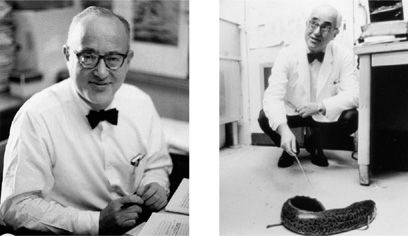
Font size:
Interval:
Bookmark:
Similar books «Fishman’s Pulmonary Diseases and Disorders, Fifth Edition»
Look at similar books to Fishman’s Pulmonary Diseases and Disorders, Fifth Edition. We have selected literature similar in name and meaning in the hope of providing readers with more options to find new, interesting, not yet read works.
Discussion, reviews of the book Fishman’s Pulmonary Diseases and Disorders, Fifth Edition and just readers' own opinions. Leave your comments, write what you think about the work, its meaning or the main characters. Specify what exactly you liked and what you didn't like, and why you think so.

